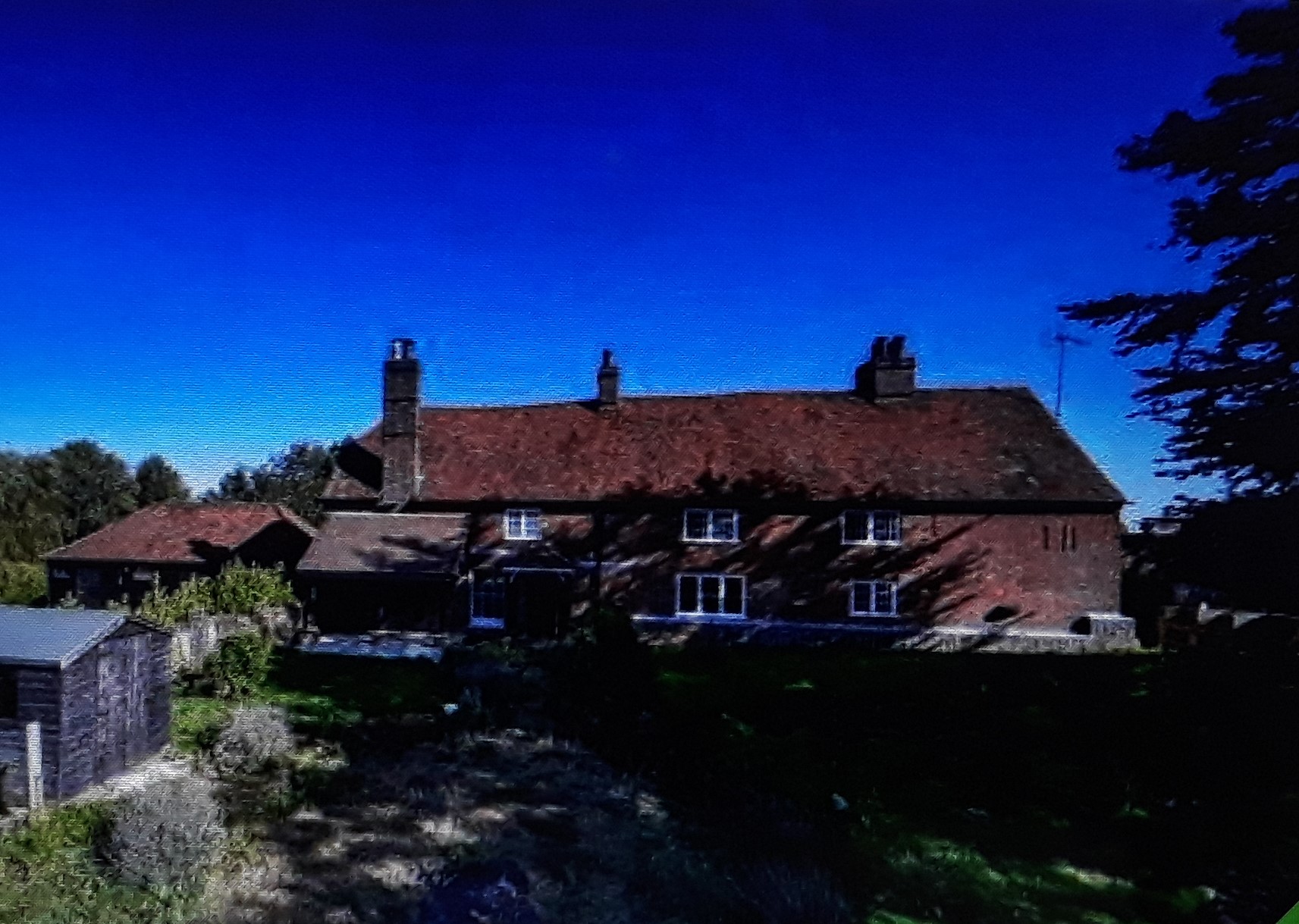Flowers Farm




The farmhouse has a 17th century timber frame bit was encased in brick in about 1830. The roof consists of plain tiles and the brick eaves are dentilled. The house is two storeys with three windows. On the upper floor these are rather unusual long Yorkshire casements with small glazing bar panes. On the ground floor, the window openings are broad with brick lintels. There is an early chimney stack. During the 19th century a half bay extension to the north-west end of the house was added. In the 1851 Census it was noted as having 100 acres.

It is possible to find the names of some of those who lived at the farm. One Walter Finch (alive 1553). His son Nicholas (1505-1585) married to Elizabeth Cressy took over the farm in 1545. He had 2 sons and 4 daughters. It is now a centre for the teaching of construction skills.
Brina Evans
| #
As a wartime born child I spent every holiday in Redbourn with my ‘Auntie Edie & Uncle Walt Coote” in the 1950’s. She worked at Flowers Farm and we would walk up for the morning milking and I would turn the butter churn and she would make pats of butter. The Macdonalds farmed there then and I would play with their children all day. I have 2 of their annual family and staff photos.
Reply
Adrian Finch
| #
Hello, I am Adrian Finch and I am descended from the Finches of Flowers. I have been working on the family and its earlier origins. The farm appears to be the lands of William FLOWER (d. 1439) and was acquired after his death by Robert Finch. In the Redbourn rental (1485), Robert owned the land ‘once Walter Flower’ and he passed it to his son John when Robert died in 1512. John himself died in 1524 and was described as ‘John Finch of Flowers’ in his will. The land passed to his son Nicholas Finch, who married Elizabeth CRESSY ~1536. Nicholas was in the land by 1545. Nicholas appears to have passed the Farm to his eldest son William who was running the farm by around 1570. In 1573, William struck a woman called Dorothy FORD and accidentally killed her. He spent three years in Hertford Gaol, during which time his younger brother son John maintained the land. In 1576, William was pardoned by Royal decree, but the custom of the manor was that since John had paid for and maintained the land while William was in prison, the land had devolved to him. John Finch only had daughters and with him the family passed out of the Finch family. William’s children did not have rights to the land and so they moved out of Redbourn to Bedfordshire and then to Surrey.
Reply
Nicola Salfranc
| #
This is so exciting! I believe some of my ancestors, the Dollings, were owners of Flowers Farm, and several others such as Dog End Farm (!) and another at Whipsnade, as mentioned in the last will and testament of Edward Dolling, 1794. An image of his will is held by The National Archives at Kew, where it may be downloaded from. I would love to know what manorial records still extant. Marvellous to know that it still stands and is still a farm.
Reply
campbell de burgh
| #
Hello
My great great grandmother Mabel Patty Beaumont was born at flowers farm in 18 72 youngest daughter of Joseph and Jane Beaumont (nee Nott). Joseph died in 1890 we think having sold the farm. In 1891 Jane and Mabel were living in south london and then Mabel married Hugo Henry Patrick de Burgh in London in 1893. Jane died in 1917 and Mabel in 1961. Hugo was killed in action in the Boer War in 1900.
We have no real information on the beaumont family at flowers farm so would be interested if any exists.
Campbell de Burgh
Reply